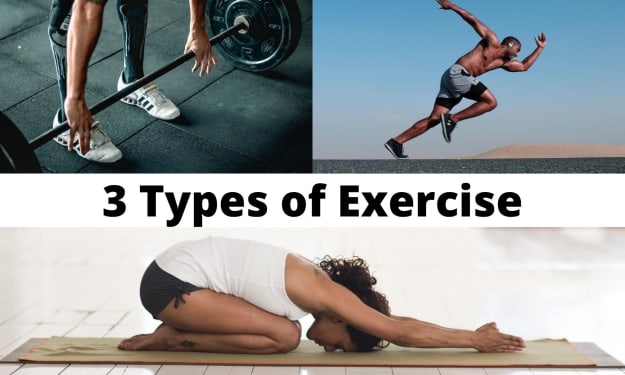How to Structure a Beginner Weight Loss Program
A guide for structuring your weight loss workouts

Losing weight can be a daunting task for many individuals, the intimidation of walking into a gym or the memory of a terrible coach telling you that you'll never be good enough can make you doubt your own capability. Here's the thing about losing weight, anyone can do it with the right guidance and consistency. There are several things to look at when trying to lose weight.
- Current fitness level- Don't be afraid to start off with easier exercises this is often the best thing to do and will help you progress a lot faster than jumping into the deep end.
- Health problems- Before performing any type of fitness regiment you should check with your health practitioner to make sure you're cleared for activity, especially if you have underlying health problems.
- Diet- Are you consuming too many calories for your body type and not enough nutritious food in general?
- Frequency of exercise- How often you should be training in order to reach your goal as well as depending on your current fitness level
- Reason for your goal- Knowing exactly why you're trying to lose weight and hanging onto it will help you maintain your training and get you back on the horse when you fall off (Don't be disappointed in yourself when it happens, everyone has these moments, even us trainers.)

Routine Structure
As a beginner it is important that you start off at a level and frequency that's not going to destroy your body and make you never want to workout again. You want to set out your routine to allow for rest and recovery as well as to insure you're training as efficiently as possible. For weight loss you will have Resistance days and Cardio days which we will get into.
- Start by choosing 3 days of the week that you can set aside and will stick to when it comes to getting your workout in. (These will be called work days.)
- You should only need 30 minutes a day initially, this will go up to an hour if you're increasing your progress. (Think about how many hours you spend watching TV or gaming, finding that 30 minutes won't be difficult.)
- Have a minimum of one day off in between each workout day to give you the adequate rest you need. (These will be called rest days.)
- Don't have more than 3 days off between each workout.
- Work Day 1 and Day 3 will be resistance based and Work Day 2 will be cardio based.
- You're going to use this routine for 3-4 weeks before you change it, but try to increase your workout time to an hour after the first 2 if you find yourself being able to.
- You can add a 4th Work Day in after week 2 if you're up for it. This will be a cardio day.

Resistance Days
Resistance is going to be the major factor in burning fat, so if you want to make sure you're getting those results, you should absolutely incorporate them. Resistance is any exercise that requires strength and focuses on putting the muscles under tension, these can be with weights, bands or even body weight. e.g. Bicep curls, banded lateral walks and wall sits.
- Choose 5-7 compound (large muscle groups) resistance exercises depending on your current level of fitness.
- For any exercise that is a hold (where there is no movement except for getting into or out of the position) you will perform for 30 seconds to 1 minute. If you can't perform the hold for the entire time, relax for 3 seconds and then resume the hold for the rest of the target time, you do not need to pause the timer.
- For any exercise that incorporates movement you will perform 8-12 reps if you are true novice (for the first 2 weeks) and then 15-20 reps (the target range for optimum fat burn) once you're more used to the exercises.
- Perform each exercise at a moderate to slow pace or a rep count of 2-0-2 (click here to see a list of gym terms).
- If you're using weights or bands make sure that they are light enough to reach your target rep count and heavy enough that you can't go beyond it.
- You will perform each exercise for 2-3 sets.
- Rest for 1 minute between each set and 2 if you desperately need it.
- Low impact exercises will be best when starting off as they will reduce stress placed on the joints. (Low impact is anything that keeps a limb or part of the body on the ground at all times and doesn't have jumping or hitting.)
- Try aim for the highest target time or reps, do not continue if you feel any extreme pain or discomfort.

Cardio Days
Cardio is going to help with recovery as well as increasing your cardio vascular performance. This basically means you're going to improve how efficiently your heart and lungs supply your body with oxygen and remove toxins while at the same time increasing your endurance (Your ability to perform exercise or other things *Wink, Wink, Nudge, Nudge* for longer periods of time). Cardio is any exercise that focuses on bringing the heart rate up for a certain amount of time and then lowering it again, it can be a set exercise like rowing or cycling or various smaller exercises like marching and mountain climbers.
- Choose either 5-7 compound low impact cardio exercises or 1 continuous cardio exercise.
- (These next few points are for the 5 exercises.) Each will be performed for 30 seconds to 1 minute at a moderate to fast pace.
- You will perform each exercise for 2-3 sets.
- Rest for 1 minute between each set and 2 if you desperately need it.
- You can incorporate weights but verly light ones should be used as they are not the main focus for these exercises. ( I don't recommend using these when just starting.)
- Low impact exercises will reduce stress placed on the joints. (Very important when new to cardio.)
- For the continuous exercise you're split the 30 minutes into 5 minute intervals.
- 5 minutes of intense work and 5 minutes of low work (Keep moving the whole time) once you get better at it make your intense work interval 10 minutes and your low work keep at 5 minutes.
- If you can't reach 30 minutes to begin, don't worry, take a proper rest then try completes the 30 minutes.
- If you progress to an hour then use the 10 intense and 5 low intervals.
- Try aim for the highest target time.
- Do not continue if you feel any extreme pain or discomfort.
When it comes to cardio, using a heart rate monitor is ideal, you will be able to accurately work within your target heart rate ranges. (You can get these from a trainer or find out how to calculate it online, which is pretty simple, just be as careful and accurate as possible for your own sake.) Diet is the other part of weight loss and is a major one! If you eat correctly and perform your workouts consistently you will begin to see the weight loss you have been desiring. Consistency is key when it comes to any type of fitness goal. Keep it up and crush your goals!
Stretching should be performed both before and after workouts, you can find out more about what types of stretching to do here.
- 10 Weight Loss Questions & Answers.
- Be prepared and refine your Gym Lingo, Etiquette, Exercise Knowledge and Workout Gear.






Comments
There are no comments for this story
Be the first to respond and start the conversation.